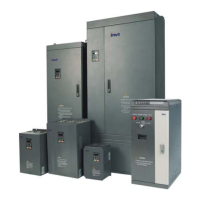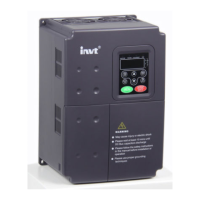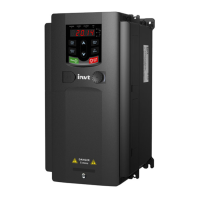F
fisherdonaldSep 8, 2025
What does external fault mean on INVT CHE100-0R4G-S2?
- WwadedavidSep 8, 2025
If the INVT DC Drive displays an external fault, it means the external fault input terminal is active. Inspect the external equipment.

What does external fault mean on INVT CHE100-0R4G-S2?
If the INVT DC Drive displays an external fault, it means the external fault input terminal is active. Inspect the external equipment.
What causes current detection fault in INVT CHE100-0R4G-S2 DC Drives?
If the INVT DC Drive displays a current detection fault, it could be due to loose wires or connectors on the control board, a damaged Hall sensor, or an abnormal amplifying circuit. Check the wiring.
How to fix autotuning fault in INVT CHE100-0R4G-S2?
If the INVT DC Drive displays an autotuning fault, it could be due to improper settings of the motor's rated parameters or the autotuning process timing out. Set the rated parameters according to the motor nameplate and check the motor’s wiring.
What does EEPROM fault mean in INVT CHE100-0R4G-S2 DC Drives?
If the INVT DC Drive displays an EEPROM fault, it indicates a read/write fault of control parameters. Press STOP/RESET to reset.
What causes PID feedback fault in INVT CHE100-0R4G-S2 DC Drives?
If the INVT DC Drive displays a PID feedback fault, it could be due to a disconnected PID feedback or a disappearing PID feedback source. Inspect the PID feedback signal wire and the PID feedback source.
How to troubleshoot brake unit fault in INVT CHE100-0R4G-S2 DC Drives?
If the INVT DC Drive shows a brake unit fault, it could be due to braking circuit failure, a damaged brake tube, or too low resistance of the externally connected braking resistor. Inspect the braking unit and replace the braking tube if necessary. Increase the braking resistance.
| Model | CHE100-0R4G-S2 |
|---|---|
| Power | 0.4 kW |
| Control Mode | V/F control |
| Communication Interface | RS485 |
| Humidity | 5% to 95% (Non-condensing) |
| Enclosure Rating | IP20 |
| Frequency Range | 0-400 Hz |
| Protection Features | Overcurrent, Overvoltage, Undervoltage, Overheat, Overload |
| Ambient Temperature | -10°C to 40°C |
| Storage Temperature | -20°C to 60°C |
| Altitude | Up to 1000m |
| Voltage Class | Single-phase 220V |
Details input/output, I/O features, and main control functions of the inverter.
Explains the information presented on the inverter's nameplate.
Provides a table to help select the correct inverter model based on specifications.
Specifies conditions like temperature, humidity, altitude, and vibration for installation.
Details main and control circuit terminal layouts for different inverter sizes.
Explains wiring for input, output, and common DC bus connections.
Details wiring precautions and terminal functions for control circuits.
Lists common fault codes, their reasons, and recommended solutions.
Provides solutions for common operational issues like no display or motor not moving.












